ENCORE SUNDAY - THE LEGEND OF LEE SHEPHERD
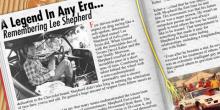 Few drivers make an impact on drag racing like a soft-spoken, determined individual named Lee Shepherd of Arlington, Texas did. When teamed with the formidable duo of fellow Texans David Reher and the late Buddy Morrison, Shepherd became a dominant force in a short span of time. His talent behind the wheel, combined with a non-confrontational personality and a sincere dedication to the Chevrolet brand, soon earned Shepherd the admiration of race fans young and old. He gained a huge amount of respect from fellow racers as well.
Few drivers make an impact on drag racing like a soft-spoken, determined individual named Lee Shepherd of Arlington, Texas did. When teamed with the formidable duo of fellow Texans David Reher and the late Buddy Morrison, Shepherd became a dominant force in a short span of time. His talent behind the wheel, combined with a non-confrontational personality and a sincere dedication to the Chevrolet brand, soon earned Shepherd the admiration of race fans young and old. He gained a huge amount of respect from fellow racers as well.
It's pretty safe to say that many teams underestimated the triumvirate from the Lone Star State, which formed under unusual circumstances. Shepherd first joined Reher-Morrison through necessity, and the relationship blossomed from there. The talented driver headed up a team that had developed a reputation in Division 4, and when Shepherd blew the engine in his ride and Reher and Morrison found themselves with an engine and no car, the forces morphed into one. They found success with a few national event wins, and in 1976 they made the huge leap into Pro Stock. The foundation had actually been laid many years before, however.
Originally published January 11, 2007
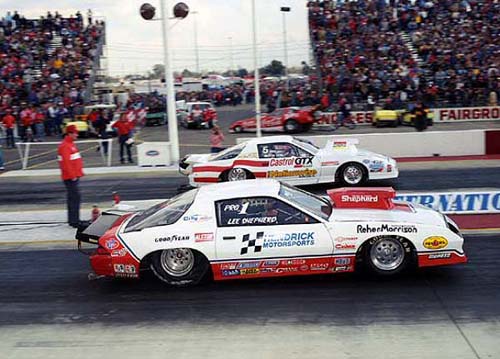
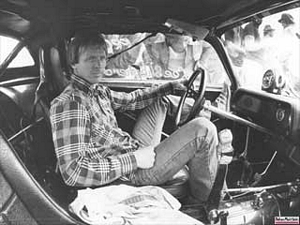
Few drivers make an impact on drag racing like a soft-spoken, determined individual named Lee Shepherd of Arlington, Texas did. When teamed with the formidable duo of fellow Texans David Reher and the late Buddy Morrison, Shepherd became a dominant force in a short span of time. His talent behind the wheel, combined with a non-confrontational personality and a sincere dedication to the Chevrolet brand, soon earned Shepherd the admiration of race fans young and old. He gained a huge amount of respect from fellow racers as well.
It's pretty safe to say that many teams underestimated the triumvirate from the Lone Star State, which formed under unusual circumstances. Shepherd first joined Reher-Morrison through necessity, and the relationship blossomed from there. The talented driver headed up a team that had developed a reputation in Division 4, and when
Shepherd blew the engine in his ride and Reher and Morrison found themselves with an engine and no car, the forces morphed into one. They found success with a few national event wins, and in 1976 they made the huge leap into Pro Stock. The foundation had actually been laid many years before, however.
Reher actually met Shepherd while he was in college at the University of Texas – Arlington. The two actually had a calculus class together.
a d v e r t i s e m e n t
Click to visit our sponsor's website
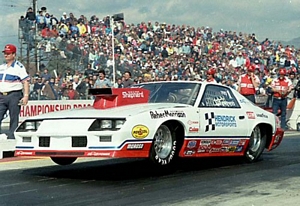 “I knew he had been running his car at the local track, but I had never really met him at a race,” recalled Reher. “I had met him in class.”
“I knew he had been running his car at the local track, but I had never really met him at a race,” recalled Reher. “I had met him in class.”
Reher admitted that he was impressed with Shepherd the first time he met him. His assessment was that his future driver was a “super person.” He wasn't outspoken and was always quick to treat others the way he would like to be treated. That temperament is something that made it easy for Shepherd to build some lasting relationships, including a longstanding one with Reher.
“Even after he became a star, he never wavered in his treatment of others. He was an extremely intelligent guy and that caused others to gravitate toward him.”
Shepherd's ability to block out distractions is something that primed him for legendary status in NHRA Pro Stock competition. According to Reher, that ability is something that enabled Shepherd to excel as quickly as he did. Even Reher had to confide that that level of concentration is something that kept him from being a driver.
Of course, the best examples of Shepherd's techniques were often most evident in his battles with Bob Glidden.
“Those guys had major staging battles,” Reher said. “Lee would let him know that there was no way that he was going to stage first. He was always quick to say that he didn't care what happened, he just wasn't going to stage first. Glidden would try to rattle his chain from time to time.”
Shepherd more times than not came out on the winning end of things against Glidden, but the one time he lost a championship to him would be the last time. In 1980, Shepherd and Glidden battled it out for a championship that went down to the final round of the final event of the season. Glidden overcame nearly insurmountable odds to win a championship that was Shepherd's to lose. A second-round win would have sealed the deal, but a broken transmission in the first round left him a sitting duck.
“Their battles were entertaining,” said Reher. NHRA starter Buster Couch would come over and look in his window and motion for him to stage, but he wouldn't move. He was determined to do what he was going to and that was that. The rest of us were going crazy, though.”
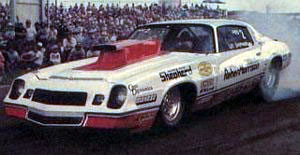 “They were pretty devastated,” said Densmore. “They had the better car all year and they won more races, but Glidden just played the points right and caught them at the end. As devastated as they were, it served as fuel for their commitment for the years to follow. They knew at that point they could do it. They just underestimated Glidden's resolve.”
“They were pretty devastated,” said Densmore. “They had the better car all year and they won more races, but Glidden just played the points right and caught them at the end. As devastated as they were, it served as fuel for their commitment for the years to follow. They knew at that point they could do it. They just underestimated Glidden's resolve.”
Shepherd's loss on that day actually served to make him a better racer from that point on. He won a string of championships from 1981 until 1984, and had plenty of momentum built up for a shot at the title in 1985 as well. In fact, his successor Bruce Allen did win an IHRA title in 1985.
“He was always happy to win, but he wasn't one of those people who jumped up and down and carried on,” said Reher when asked to describe Shepherd’s legendary calm demeanor. “He took it all matter-of-factly.
“I'd venture to say that most people didn't know that winning wasn't what motivated him the most – it was making the car go faster and faster,” Reher said. “If we had a weekend off, he could most likely be found spending hours and hours on a flow bench trying to extract horsepower above and beyond what we had.”
Reher said that Shepherd was a self-motivated person who never shied away from work. He said that there were times he had called it a day and left for home, only to return the next morning to see Shepherd still at it.
“He came up with things that are still being used today,” said Reher.“He was a pioneer and was well ahead of his time. I don't think anyone really understood just how hard he worked striving for perfection.
a d v e r t i s e m e n t
Click to visit our sponsor's website
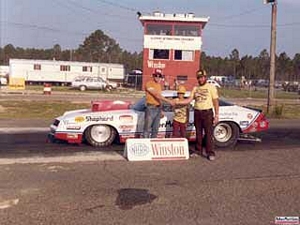 “He was a forward thinker and was plenty capable of thinking outside of the box. He didn't concern himself much with what other people were doing. He was focused and in tune to his program. Some of his ideas were hair-brained, but then again, he had some really good ones.”
“He was a forward thinker and was plenty capable of thinking outside of the box. He didn't concern himself much with what other people were doing. He was focused and in tune to his program. Some of his ideas were hair-brained, but then again, he had some really good ones.”
No matter how bad the rivalries got, Shepherd never held any animosity towards Glidden or any racer. In fact, Reher recalled the team dining at Glidden's home during the course of the season.
Even when a fellow racer allegedly paid the starter of one of the smaller sanctioning bodies to give a quick tree against Shepherd, he didn't raise a brow. He just accepted it as a part of drag racing that he had really no control over.
Quiet, unemotional and driven to win were three of the many traits that could have likely propelled Shepherd to winning records in today's 23-race schedule seasons. However, he would be forever remembered for his innovativeness and commitment to excellence more than he would be for his interviews and candidness with the press.
In those days, the Reher, Morrison and Shepherd trio were represented in the media by Densmore, who currently represents Funny Car legend John Force.
According to Densmore, Shepherd rated a 10 as a driver and cylinder head specialist, but O as an interview. “I could honestly say that he was probably one of the worst interviews out there when he first started in Pro Stock. He had never been exposed to that kind of stuff and he was already quiet by nature. That's why it was great to see him evolve over the course of a half-decade and see him come out of his shell around the media.”
a d v e r t i s e m e n t
Click to visit our sponsor's website
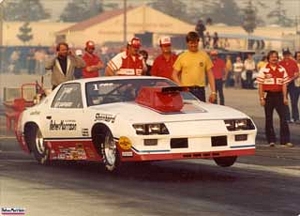 Densmore laughs when he adds that Shepherd's “coming out of the shell” meant that he gave the media more than yes or no answers. “He was never going to threaten John Force when it came to talking.”
Densmore laughs when he adds that Shepherd's “coming out of the shell” meant that he gave the media more than yes or no answers. “He was never going to threaten John Force when it came to talking.”
As mentioned, Shepherd's true area of expertise was in cylinder heads and their development. Public speaking and public relations just weren't his forte. “Lee was a very talented machinist and designer,”
Densmore said. “He was a quiet person. Between rounds, you'd always see him up in the front of the Chaparral trailer by himself.”
In a true measure of his domination, Shepherd won both NHRA and IHRA titles in 1983 and 1984. Shepherd's successor Allen won the IHRA title in 1985.
That success relates to one thing – determination. Outside of racing, there were no hobbies and very little spare time was devoted to lounging. He was continually on the go and that suited Reher and Morrison just fine.
“Lee's life outside of racing actually tied back into racing,” said Densmore. “It was full circle. He built motors during the week to sell to customers and then he raced on the weekend. They always considered their racecar as a form of advertising.”
Densmore recalled the first time he met Shepherd and Reher-Morrison while working as a writer for an Amarillo newspaper.
“I kind of thought they were in over their heads at the time,” Densmore said. “This was in the era that Bob Glidden was dominating and Bill Jenkins and the Dodge guys were all pretty tough. I just looked at these guys as a group of local Modified racers trying to hit it big.
“At the time, they went to the NHRA Cajun Nationals when it was run at LaPlace Dragway outside of New Orleans. It wasn't a national event, but rather a national open at the time. They won the race. To be fair, the field wasn't loaded with heavy-hitters, either. Later in the year, they had a crash in Englishtown.”
After that, the trio re-evaluated their decision to run as professionals. Shepherd returned to Modified as a hired driver for another team and won a national event. They all had the bug by that time, however, and it wasn't long before they met up again and made the decision to take another stab at it.
a d v e r t i s e m e n t
Click to visit our sponsor's website
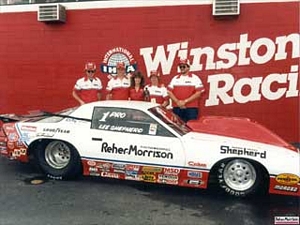 Pro Stock racing was never the same from then on, or at least that's how many race fans saw it. Glidden had been brutally dominant for much of the Seventies, but Shepherd’s emergence in 1980 would signal a changing of the guard.
Pro Stock racing was never the same from then on, or at least that's how many race fans saw it. Glidden had been brutally dominant for much of the Seventies, but Shepherd’s emergence in 1980 would signal a changing of the guard.
Shepherd had effectively entered the game by flying under the radar of the front-runners, and before they knew what had happened he had amassed over 36 NHRA and IHRA national event victories and scores of AHRA titles. Just as quickly as he entered the hearts of those in the racing community, however, he was snatched away as the victim of a testing accident in Ardmore, Oklahoma.
In those days, the printed media and the syndicated Diamond P race coverage were the only means of presenting drag racing news. Many people in the industry didn't find out until weeks later, but those in the know got the news quickly.
“I was absolutely stunned,” Densmore said. “When they told me that he was gone, I was in shock. The whole drag racing community was in a state of shock. That was the kind of stuff that happened to other people, not championship teams like Reher & Morrison.”
In the wake of Shepherd’s death there were suggestions that less-than-sufficient track safety was an issue. The car reportedly became airborne and struck an earthen berm. The team had been doing sixty-foot shots all day and for some reason Shepherd decided to take it to the finish line under full power. A severe crosswind proved to be fatal.
Reher, who had seen more than his share of crashes, had no idea that the crash was fatal from his starting-line vantage point. “No crash is a good crash and certainly people have survived much worse looking crashes,” said Reher. “Anything can happen and we see it happen time and time in today's racing world. Dale Earnhart's wreck didn't look too violent on television, but we know how it turned out.
“Racing is a dangerous sport, as we all know, and all it takes is one blow and it can be fatal. That is something that will never change in racing. It will always be dangerous, even for a champion like Lee. Cars are built better and hopefully we keep learning from these deals. Every impact brings about a new set of circumstances and teaches new things to hopefully prevent fatal accidents in the future.
“As humans, we're pretty good at using hindsight, but we still cannot predict the future.”
Shepherd was certainly not a driver who could be easily replaced, but Reher is pretty certain the driver to take over following the crash was one that Lee would have personally selected if he decided to quit.
“I'm almost certain that Lee would have selected Bruce Allen, as we did,” Reher said. “Bruce was exactly the kind of person that Lee liked. Bruce is a low-key, non-egotistical person and that's the way Lee was. He was a hard-worker, too.”
One can only guess where Shepherd's career would have gone, but as Reher sees it, he might have been impressed with the class today.
| {loadposition feedback} |







































